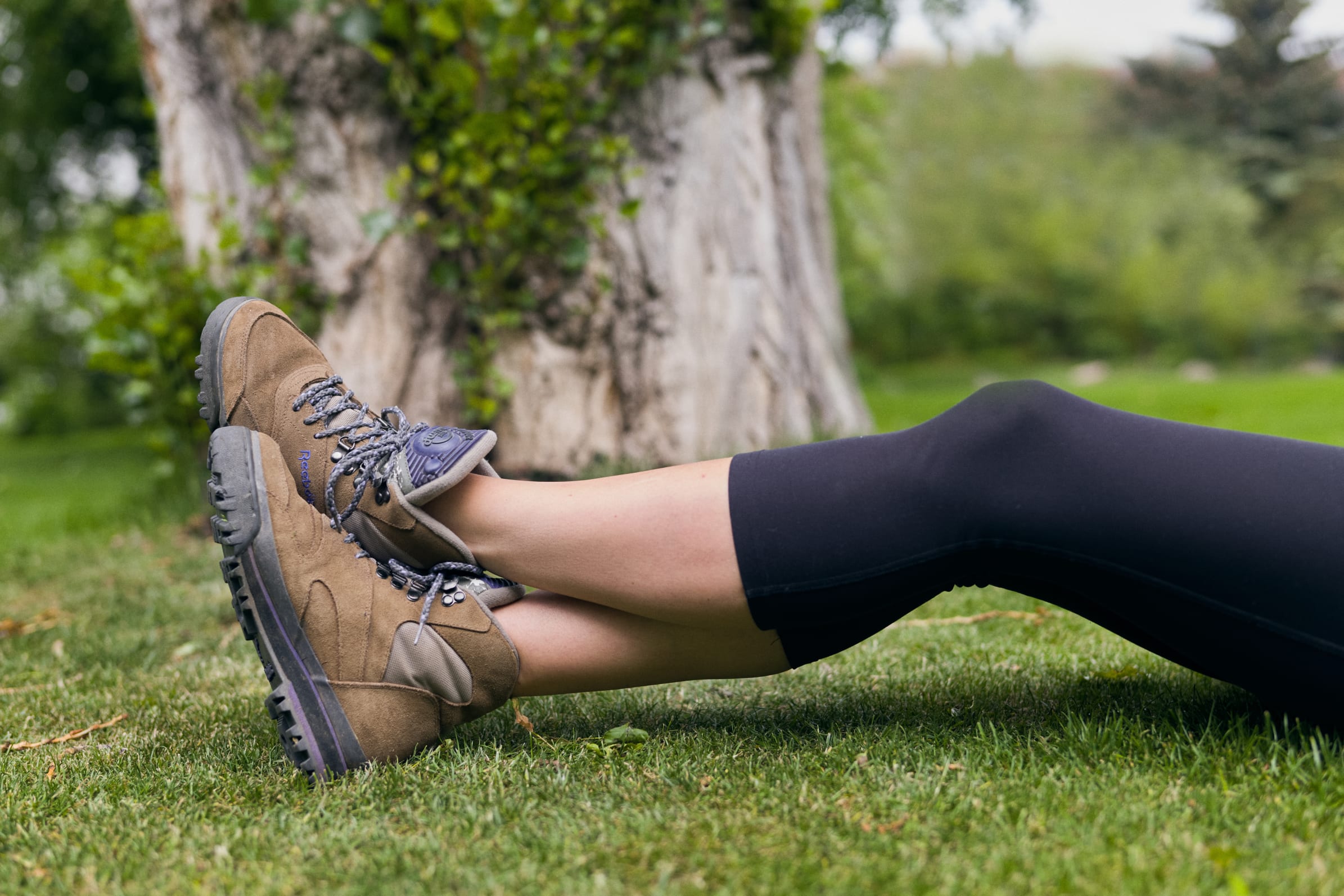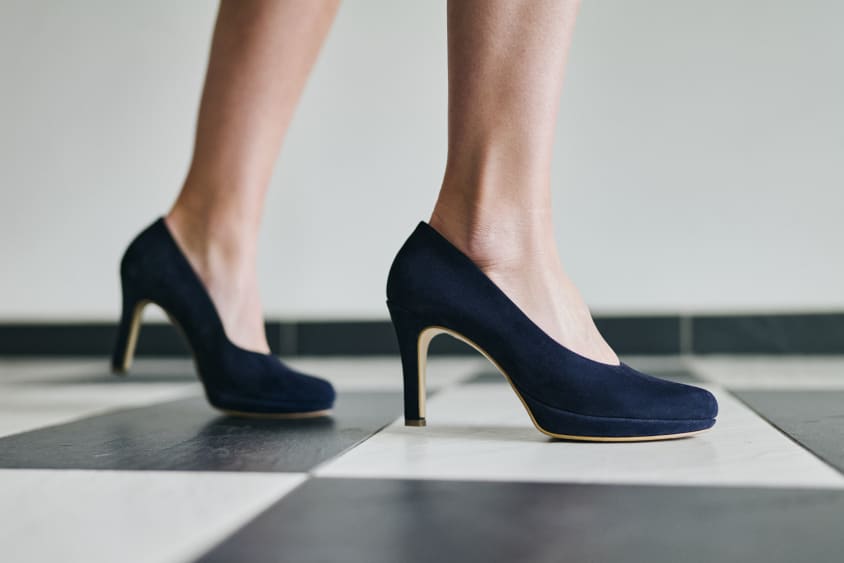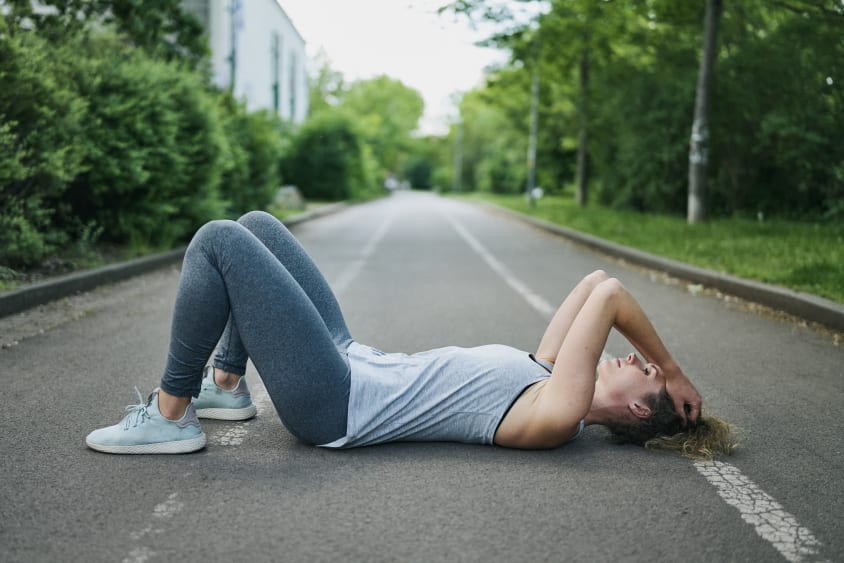
Calf pain - Do you know what it is like to have calf pain?

Maybe you sometimes or regularly have calf pain after running? Maybe you experience tense, hardened or cramped calves in other situations? We will explain what can cause calf pain and how you can deal with it.
01. What is calf pain?
The problem is more serious if the pain in the calf is triggered by circulatory disorders or nerve irritation. Both are also evident in compartment syndrome. Cases like these are rare, but you should see a doctor as soon as possible to avoid long-term health complications.
02. What symptoms are assoicated with calf pain?
Because there can be so many different causes of calf pain, the symptoms also vary considerably. They can occur individually or in conjunction with other symptoms:
- Pain in the calf (at rest, during or after physical exertion or at night)
- Limited mobility in the ankle
- Reduced muscle strength to loss of strength while extending the foot
- Numbness or tingling along the lower leg
When should I see a doctor?
Even though calf pain usually disappears on its own and is not a cause for concern, you should definitely consult a doctor in the following cases. Because sometimes the right treatment has to be given quickly in order to avoid long-term health problems:
- Sudden, inexplicable, severe pain
- Persistent or recurrent symptoms
03. What are the causes of calf pain?
We will explain how you can distinguish between the different causes of calf pain. However, if in doubt, you should contact a doctor who can make a reliable diagnosis.
The muscles as the cause of calf pain
during physical activities such as running or playing soccer, many people tend to get calf cramps as a result of overexertion. This leads to the involuntary contraction of one or more calf muscles, which can be very painful and can result in hardening of the calf. Even if the cramp resolves quickly, your calf may feel hard and tense for several days afterward.
Another common cause of calf pain is muscle strain and muscle fiber tears. Both usually occur in the inner part of the gastrocnemius muscle when you push off from the ground powerfully with your foot – for example when sprinting or jumping. The pain is usually described as sharp with a tearing feeling. It is more pronounced in muscle fiber tears. Then there are also the major restrictions on mobility and strength. A large muscle fiber tear is also accompanied by swelling and bruising (hematoma).
On the other hand, a direct hit to the calf – in sports, for example, from a fast moving ball or a collision with an opposing player – more likely causes muscle bruising (contusion). You will also feel a sharp pain, but, compared to a muscle fiber tear, this is more often associated with swelling and a hematoma (bruise).
The tendons as the cause of the calf pain
calf pain can also occur without involving the calf muscles – for example, acute or chronic overuse of the Achilles tendon or an Achilles tendon rupture. Overuse of the Achilles tendon usually manifests itself as a sharp pain in the affected area, accompanied by a burning sensation along the calf muscles. You will also feel tension in the calf. These symptoms appear gradually and progressively. The causes are an inflammatory process or a degenerative structural change in the tendon. On the other hand, an Achilles tendon rupture occurs suddenly. It is accompanied by a sharp pain. Some people describe a popping noise. Afterwards, it is difficult or impossible to stand on the affected leg and to stretch out the tip of your foot.
Blood flow as the cause
other causes of calf pain are deep vein thrombosis (DVT) or peripheral arterial occlusive disease, each with a resulting circulatory disorder.
With deep vein thrombosis, a blood clot (thrombus) forms in a vein of the lower leg. If you have even the slightest suspicion that you have a clot, you should see a doctor right away, because the clot can break loose and travel into the lungs and block blood flow, for example. Some typical symptoms are redness and swelling, a feeling of warmth, and increased pain in the affected calf at rest or at night. Your calf muscles may also cramp. The risk for developing deep vein thrombosis increases with age, obesity, smoking and lower activity levels. Pregnancy and previous operations can also increase your risk of DVT.
With peripheral arterial occlusive disease, the arteries of the lower leg receive less blood. The cause is usually atherosclerosis (“hardening of the arteries”). It causes pain in the foot and calf, possibly even up into the hip, mainly when walking. If it is severe, you will feel it after walking just a few meters. It may even manifest as a cramping feeling. The pain only subsides when you stand still.
The nerves as the cause
a trapped nerve can irritate the nerves running to or through the calf. The result: numbness, tingling and/or sharp pain. In addition, there may be muscle weakness and even functional limitations in everyday life.
Compartment syndrome as the cause
another cause of calf pain is compartment syndrome. Severe swelling or a bruise increases the tissue pressure – and this can put increased pressure on the blood vessels and nerves in the lower leg. When nerves are irritated, you mainly feel numbness and tingling. When the blood vessels are affected, the pain is more intense. If the condition lasts a while, it may result in permanent damage.
04. What can help you with calf pain
You can relieve or eliminate most forms of calf pain originating in the muscles by doing targeted exercises. Exercises often help, even if the Achilles tendon is overloaded. But you should see a doctor immediately if you experience a rupture of the Achilles tendon, a circulatory disorder or nerve irritation.
We will show you the most important exercises that relieve tension in calf muscles and the fascia, improve mobility, and activate and strengthen the muscles, which often show weak spots at the root of calf and foot complaints.
The BLACKROLL® approach includes:
- Myofascial self-massage
- Releasing deep muscle tension
- Mobilization and stretching exercises
- Activation and strengthening exercises
05. How to prevent calf pain
Perform the exercises for calf pain as a preventive measure: the exercises that help with calf pain naturally also have a preventive effect. Perform the exercises, for example, after you’ve been for a run.
Drink enough water: dehydration can promote muscle cramps.
Pay attention to your mineral balance: make sure you have enough sodium, potassium and magnesium in your diet. These minerals are responsible, among other things, for fluid exchange and for muscle and nerve function.
Increase the intensity according to your fitness level: ambitious people, in particular, tend to overexert themselves during training. If you are overtraining, even the best regeneration measures will not help. So increase the intensity gradually and base it on your fitness level. And don’t forget to take breaks!
Choose the right shoes: if you walk a lot, a well-cushioned sole helps. Go barefoot as much as you can in the summer.






